First of all, I would say, my solution below is a brute-force method, thus only working well for graphs of small size, i.e., not many vertices or arcs.
If you have large networks, you should refer to some more advanced algorithms, e.g., https://link.springer.com/article/10.1007/s40747-018-0079-7
Since you have 6 arcs and 5 vertices, you only need to remove 2 arcs out of 6 to find the spanning tree. There would be combn(6,2) options, and you can delete those edge combinations one by one to check if a spanning tree remains
Filter(
function(x) length(decompose(x)) == 1,
combn(
ecount(g),
ecount(g) - vcount(g) + 1,
FUN = function(x) delete.edges(g, E(g)[x]),
simplify = FALSE
)
)
which gives all 11 spanning trees
[[1]]
IGRAPH 9692f3d U--- 5 4 -- Erdos renyi (gnm) graph
+ attr: name (g/c), type (g/c), loops (g/l), m (g/n)
+ edges from 9692f3d:
[1] 2--4 3--4 1--5 2--5
[[2]]
IGRAPH 969368e U--- 5 4 -- Erdos renyi (gnm) graph
+ attr: name (g/c), type (g/c), loops (g/l), m (g/n)
+ edges from 969368e:
[1] 1--3 3--4 1--5 2--5
[[3]]
IGRAPH 969368e U--- 5 4 -- Erdos renyi (gnm) graph
+ attr: name (g/c), type (g/c), loops (g/l), m (g/n)
+ edges from 969368e:
[1] 1--3 2--4 1--5 2--5
[[4]]
IGRAPH 96938fa U--- 5 4 -- Erdos renyi (gnm) graph
+ attr: name (g/c), type (g/c), loops (g/l), m (g/n)
+ edges from 96938fa:
[1] 1--3 2--4 3--4 2--5
[[5]]
IGRAPH 96938fa U--- 5 4 -- Erdos renyi (gnm) graph
+ attr: name (g/c), type (g/c), loops (g/l), m (g/n)
+ edges from 96938fa:
[1] 1--3 2--4 3--4 1--5
[[6]]
IGRAPH 9693ded U--- 5 4 -- Erdos renyi (gnm) graph
+ attr: name (g/c), type (g/c), loops (g/l), m (g/n)
+ edges from 9693ded:
[1] 1--2 2--4 3--4 2--5
[[7]]
IGRAPH 969404b U--- 5 4 -- Erdos renyi (gnm) graph
+ attr: name (g/c), type (g/c), loops (g/l), m (g/n)
+ edges from 969404b:
[1] 1--2 2--4 3--4 1--5
[[8]]
IGRAPH 96942b7 U--- 5 4 -- Erdos renyi (gnm) graph
+ attr: name (g/c), type (g/c), loops (g/l), m (g/n)
+ edges from 96942b7:
[1] 1--2 1--3 3--4 2--5
[[9]]
IGRAPH 9694527 U--- 5 4 -- Erdos renyi (gnm) graph
+ attr: name (g/c), type (g/c), loops (g/l), m (g/n)
+ edges from 9694527:
[1] 1--2 1--3 3--4 1--5
[[10]]
IGRAPH 9694527 U--- 5 4 -- Erdos renyi (gnm) graph
+ attr: name (g/c), type (g/c), loops (g/l), m (g/n)
+ edges from 9694527:
[1] 1--2 1--3 2--4 2--5
[[11]]
IGRAPH 9694797 U--- 5 4 -- Erdos renyi (gnm) graph
+ attr: name (g/c), type (g/c), loops (g/l), m (g/n)
+ edges from 9694797:
[1] 1--2 1--3 2--4 1--5




